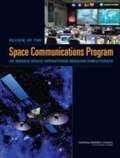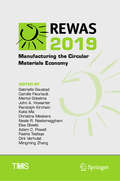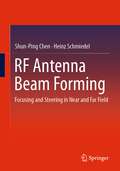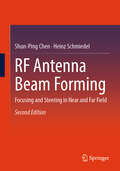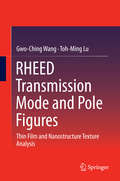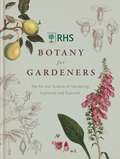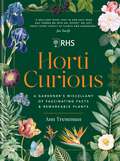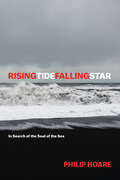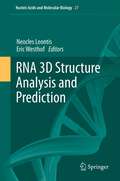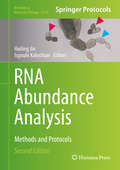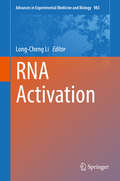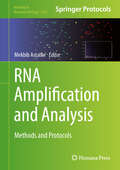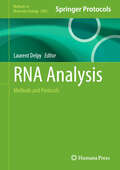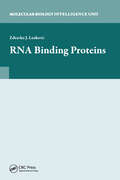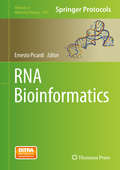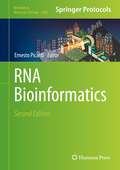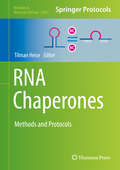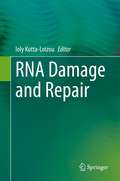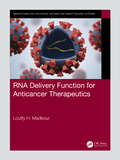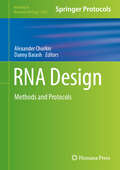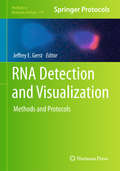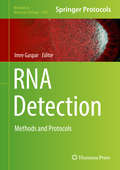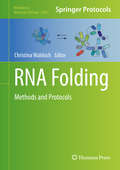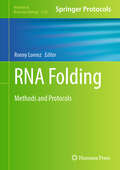- Table View
- List View
REVIEW OF THE Space Communications Program OF NASA'S SPACE OPERATIONS MISSION DIRECTORATE
by National Research Council of the National AcademiesThe Space Communications Office (SCO) at NASA has two primary roles. The first is to manage two of the communications networks that enable spaceflight operations and research, and the second is to integrate agency-wide telecommunications issues. In 2005, NASA asked the NRC to review the effectiveness of the SCO in carrying out its responsibilities by assessing the overall quality of the space communications program. This report presents a review of each of the program elements within the SCO—the space network, NASA’s integrated space network (NISN), spectrum management, standards management, search and rescue, communications and navigation architecture, technology, and operations integration. The review focuses on formulation of plans for each element, plan development methodology, connections with the broader community, and overall capabilities. Recommendations for improving SCO operations and organization are provided.
REWAS 2019: Manufacturing the Circular Materials Economy (The Minerals, Metals & Materials Series)
by Neale R. Neelameggham Mingming Zhang Elsa Olivetti Fiseha Tesfaye John A. Howarter Dirk Verhulst Gabrielle Gaustad Camille Fleuriault Mertol Gökelma Randolph Kirchain Kaka Ma Christina Meskers Adam C. PowellEvery sector faces unique challenges in the transition to sustainability. Across each, materials will play a key role. That will depend on novel materials and processes, but these will only be effective with a solid understanding of the trends in the market. For each respective sector, the papers in this collection will explore the trends and drivers toward sustainability, the enabling materials technologies and challenges, and the tools to evaluate their implications. Major sections in REWAS 2019 include: Disruptive Material Manufacturing: Scaling and Systems Challenges Education and Workforce Development Rethinking Production Secondary and Byproduct Sources of Materials, Minerals, and Metals
RF Antenna Beam Forming: Focusing and Steering in Near and Far Field
by Shun-Ping Chen Heinz SchmiedelThis book is designed for both the scientific audience, research and development engineers and the university students. The fundamentals of radio frequency antenna beam forming is explained in this book. The principles of beam focusing and beam steering in near field and far field are visualized with 2D and 3D simulations and compared with measurement results. Besides linear and planar antenna arrays, also conformal arrays, i.e. concave and convex antenna arrays, suitable for certain applications, are investigated and presented. Also related applications of radio frequency beam forming like open loop and closed loop large scale antenna arrays or massive MIMO, which is one of the break-through technologies for 5G and future 6G and involves an extremely large number of antenna elements for the multi-user beam forming, as well as thinned antenna arrays with electrically large distances between the antenna elements are discussed.
RF Antenna Beam Forming: Focusing and Steering in Near and Far Field
by Shun-Ping Chen Heinz SchmiedelThis book is designed for both the scientific audience, research and development engineers and university students. The fundamentals of radio frequency antenna beam forming are explained in this book. The principles of beam focusing and beam steering in near field and far field are visualized with 2D and 3D simulations and compared with measurement results. Besides linear and planar antenna arrays, also conformal arrays, i.e. concave and convex antenna arrays, suitable for certain applications, are investigated and presented. Also related applications of open loop and closed loop beam forming, and massive MIMO, which is one of the break-through technologies for 5G and future 6G and involves an extremely large number of antenna elements for the multi-user beam forming, are discussed in detail. Also covered are large scale antenna arrays as well as thinned antenna arrays with electrically large distances between the antenna elements.
RHEED Transmission Mode and Pole Figures
by Toh-Ming Lu Gwo-Ching WangThis unique book covers the fundamental principle of electron diffraction, basic instrumentation of RHEED, definitions of textures in thin films and nanostructures, mechanisms and control of texture formation, and examples of RHEED transmission mode measurements of texture and texture evolution of thin films and nanostructures. Also presented is a new application of RHEED in the transmission mode called RHEED pole figure technique that can be used to monitor the texture evolution in thin film growth and nanostructures and is not limited to single crystal epitaxial film growth. Details of the construction of RHEED pole figures and the interpretation of observed pole figures are presented. Materials covered include metals, semiconductors, and thin insulators. This book also: Presents a new application of RHEED in the transmission mode Introduces a variety of textures from metals, semiconductors, compound semiconductors, and their characteristics in RHEED pole figures Provides examples of RHEED measurements of texture and texture evolution, construction of RHEED pole figures, and interpretation of observed pole figures RHEED Transmission Mode and Pole Figures: Thin Film and Nanostructure Texture Analysis is ideal for researchers in materials science and engineering and nanotechnology.
RHS Botany for Gardeners: The Art and Science of Gardening Explained & Explored
by Royal Horticultural Society'Clever... valuable introduction to the study of plant science.' - Gardeners IllustratedRHS Botany for Gardeners is more than just a useful reference book on the science of botany and the language of horticulture - it is a practical, hands-on guide that will help gardeners understand how plants grow, what affects their performance, and how to get better results. Illustrated throughout with beautiful botanical prints and simple diagrams, RHS Botany for Gardeners provides easy-to-understand explanations of over 3,000 botanical words and terms, and show how these can be applied to everyday gardening practice. For easy navigation, the book is divided into thematic chapters covering everything from Plant Pests, and further subdivided into useful headings such as 'Seed Sowing' and 'Pruning'. 'Botany in Action' boxes provide instantly accessible practical tips and advice, and feature spreads profile the remarkable individuals who collected, studied and illustrated the plants that we grow today. Aided by this book, gardeners will unlock the wealth of information that lies within the intriguing world of botanical science - and their gardens will thrive as a result. This is the perfect gift for any gardener.Contents Includes...The Plant kingdomGrowth, Form and FunctionInner WorkingsReproductionThe Beginning of LifeExternal FactorsPruningBotany and the SensesPest, Diseases and DisordersBotanists and Botanical Illustration... And Much More!
RHS Horti Curious: A Gardener's Miscellany of Fascinating Facts & Remarkable Plants
by Ann Treneman'A brilliant book that in one easy read has turned me into an 'expert' on just about every aspect of plants and gardening' Joe SwiftWhat is xeriscaping? How do you make a seed bomb? Why should you avoid the gympie-gympie tree? When was the first botanical garden created? What type of tulip was once as expensive as a house?Delve into the lush world of Horti Curious, where you will find the answers to of all of these questions, along with hundreds of other entertaining and enlightening facts. Written by gardener and columnist for The Times, Ann Treneman, with the expert advice of the RHS, every page is a verdant oasis brimming with knowledge and inspiration for gardeners and plant lovers.From forgotten folklore to famous gardeners, and from incredible edibles to poisonous plants, this compendium of curiosities celebrates the diverse wonders of horticulture and botany.Beautifully illustrated with botanical diagrams and graphics, this miscellany will inform and delight gardeners and plant lovers. A 'pick and mix' of horticultural knowledge, it ranges from local to global, filled with maps, historical biographies, scientific explorations, plant profiles, fun and unbelievable facts, recipes and tips.
RHS Horti Curious: A Gardener's Miscellany of Fascinating Facts & Remarkable Plants
by Ann Treneman'A brilliant book that in one easy read has turned me into an 'expert' on just about every aspect of plants and gardening' Joe SwiftWhat is xeriscaping? How do you make a seed bomb? Why should you avoid the gympie-gympie tree? When was the first botanical garden created? What type of tulip was once as expensive as a house?Delve into the lush world of Horti Curious, where you will find the answers to of all of these questions, along with hundreds of other entertaining and enlightening facts. Written by gardener and columnist for The Times, Ann Treneman, with the expert advice of the RHS, every page is a verdant oasis brimming with knowledge and inspiration for gardeners and plant lovers.From forgotten folklore to famous gardeners, and from incredible edibles to poisonous plants, this compendium of curiosities celebrates the diverse wonders of horticulture and botany.Beautifully illustrated with botanical diagrams and graphics, this miscellany will inform and delight gardeners and plant lovers. A 'pick and mix' of horticultural knowledge, it ranges from local to global, filled with maps, historical biographies, scientific explorations, plant profiles, fun and unbelievable facts, recipes and tips.
RISINGTIDEFALLINGSTAR: In Search of the Soul of the Sea
by Philip Hoare“Every day is an anxiety in my ways of getting to the water. . . . I’ve become so attuned to it, so scared of it, so in love with it that sometimes I can only think by the sea. It is the only place I feel at home.” Many of us visit the sea. Admire it. Even profess to love it. But very few of us live it. Philip Hoare does. He swims in the sea every day, either off the coast of his native Southampton or his adopted Cape Cod. He watches its daily and seasonal changes. He collects and communes with the wrack—both dead and never living—that it throws up on the shingle. He thinks with, at, through the sea. All of which should prepare readers: RISINGTIDEFALLINGSTAR is no ordinary book. It mounts no straight-ahead argument. It hews to no single genre. Instead, like the sea itself, it moves, flows, absorbs, transforms. In its pages we find passages of beautiful nature and travel writing, lyrical memoir, seams of American and English history and much more. We find Thoreau and Melville, Bowie and Byron, John Waters and Virginia Woolf, all linked through a certain refusal to be contained, to be strictly defined—an openness to discovery and change. Running throughout is an air of elegy, a reminder that the sea is an ending, a repository of lost ships, lost people, lost ways of being. It is where we came from; for Hoare, it is where he is going. “Every swim is a little death,” Hoare writes, “but it is also a reminder that you are alive.” Few books have ever made that knife’s edge so palpable. Read RISINGTIDEFALLINGSTAR. Let it settle into the seabed of your soul. You’ll never forget it.
RNA 3D Structure Analysis and Prediction
by Eric Westhof Neocles LeontisWith the dramatic increase in RNA 3D structure determination in recent years, we now know that RNA molecules are highly structured. Moreover, knowledge of RNA 3D structures has proven crucial for understanding in atomic detail how they carry out their biological functions. Because of the huge number of potentially important RNA molecules in biology, many more than can be studied experimentally, we need theoretical approaches for predicting 3D structures on the basis of sequences alone. This volume provides a comprehensive overview of current progress in the field by leading practitioners employing a variety of methods to model RNA 3D structures by homology, by fragment assembly, and by de novo energy and knowledge-based approaches.
RNA Abundance Analysis: Methods and Protocols (Methods in Molecular Biology #2170)
by Hailing Jin Isgouhi KaloshianThis updated book covers a wide range of techniques on RNA extraction, detection, quantification, visualization, and genome-wide profiling, from conventional methods to state-of-the-art high throughput approaches. It includes detailed techniques to examine mRNAs, small non-coding RNAs, protein-associated small RNAs, organelle RNAs, endosymbiont RNAs, and alternatively spliced RNA variants from various organisms. RNA editing and the computational data processing for genome-wide datasets is also discussed. Written for the highly successful Methods in Molecular Biology series, chapters include introductions to their respective topics, lists of the necessary materials and reagents, step-by-step, readily reproducible laboratory protocols, and tips on troubleshooting and avoiding known pitfalls. Authoritative and practical, RNA Abundance Analysis: Methods and Protocols, Second Edition provides a comprehensive set of techniques and methods on isolating and analyzing mRNAs, small RNAs, and other RNA variants, in order to assist researchers in their gene expression studies.
RNA Activation
by Long-Cheng LiThis book offers an essential guide to RNA activation (RNAa), an emerging and fascinating new field. RNAa is a small RNA-guided and Argonaute-dependent gene regulation phenomenon in which promoter-targeted short double-stranded RNAs (dsRNAs) induce target gene expression at the transcriptional level. It occurs primarily in the nucleus and can be mediated by artificially designed short duplex RNAs that target regulatory sequences (e.g., promoters, genes’ 3’ termini and enhancers) and naturally occurring small RNAs (e.g., miRNAs and C. elegans 22G-RNAs). With contributions from internationally respected RNA experts, this book provides comprehensive coverage of different RNAa mechanisms and a timely update on recent advances in RNAa research, with a focus on developing RNAa-based therapeutics. Special chapters are also devoted to the topics of gene activation induced by antisense oligonucleotides and the CRISPR system. As the first book to cover RNAa, it will be of interest to a wide audience, from scientists in academia and the pharmaceutical industry to clinicians who wish to further explore the biology of RNAa and related phenomena, so as to harness their full potential for use in biotechnology and drug development.
RNA Amplification and Analysis: Methods and Protocols (Methods in Molecular Biology #2822)
by Mekbib AstatkeThis volume provides methods to analyze RNA and gain insight to a number of critical cellular functions. Chapters detail RNA isolation and enrichment, RNA amplification and detection, RNA sequencing, analysis of RNA modification, RNA delivery approaches, and analysis of RNA binding and catalytic activity. Written in the highly successful Methods in Molecular Biology series format, chapters include introductions to their respective topics, lists of the necessary materials and reagents, step-by-step, readily reproducible laboratory protocols, and key tips on troubleshooting and avoiding known pitfalls. Authoritative and cutting-edge, RNA Amplifications and Analysis: Methods and Protocols aims to present researchers with cutting-edge technologies with detailed explanations of critical steps, while providing a clear understanding of the overall protocol.
RNA Analysis: Methods and Protocols (Methods in Molecular Biology #2962)
by Laurent DelpyThis volume explores the latest technologies for RNA analysis, covering fundamental techniques and innovative approaches that expand our understanding of RNA biology. The chapters in this book are organized into four parts: reverse transcription and RNA capture methods; high-throughput sequencing methods; RNA maturation: splicing, polyadenylation, and epitranscriptomic modifications; and RNA surveillance: nonsense-mediated mRNA decay. These chapters aim to provide detailed protocols for select techniques used by molecular and computational biologists to isolate, amplify, detect, modify, and analyze RNA to gain insight into a wide range of cellular functions. Written in the highly successful Methods in Molecular Biology series format, chapters include introductions to their respective topics, lists of the necessary materials and reagents, step-by-step, readily reproducible laboratory protocols, and tips on troubleshooting and avoiding known pitfalls.Cutting-edge and comprehensive, RNA Analysis: Methods and Protocols is a valuable resource for students, technicians, and senior scientists who want to learn more about this dynamic field of RNA research.
RNA Binding Proteins
by Zdravko LorkovicGene expression in eukaryotes is regulated at different levels, which need to be coordinated to implement the information in the genome. Now it is clear that post-transcriptional regulation of gene expression such as pre-mRNA splicing, mRNA transport, editing, turnover and translation are as important as the control of transcription. In all aspects
RNA Bioinformatics
by Ernesto PicardiThis volume provides an overview of RNA bioinformatics methodologies, including basic strategies to predict secondary and tertiary structures, and novel algorithms based on massive RNA sequencing. Interest in RNA bioinformatics has rapidly increased thanks to the recent high-throughput sequencing technologies allowing scientists to investigate complete transcriptomes at single nucleotide resolution. Adopting advanced computational technics, scientists are now able to conduct more in-depth studies and present them to you in this book. Written in the highly successful Methods of Molecular Biology series format, chapters include introductions to their respective topics, lists of the necessary materials and equipment, step-by-step, readily reproducible bioinformatics protocols, and key tips to avoid known pitfalls. Authoritative and practical, RNA Bioinformatics seeks to aid scientists in the further study of bioinformatics and computational biology of RNA.
RNA Bioinformatics (Methods in Molecular Biology #2284)
by Ernesto PicardiThis detailed book aims to provide an overview of novel bioinformatics resources for exploring diverse aspects of RNA biology. This edition focuses on methods dealing with non-coding RNA (miRNAs, circRNAs or lncRNAs), RNA modifications (m6A or RNA editing), single cell RNA-seq and statistical models to handle count data from RNA-seq experiments. The book also includes chapters based on the classical RNA bioinformatics methods, such as those for deciphering secondary and tertiary RNA structures; however, they are revised to take into account deep sequencing data. Finally, chapters describing methods to analyze RNA sequencing data from emerging third generation sequencing technologies that could provide interesting insights into the transcriptional process and its regulation are also included. Written for the highly successful Methods in Molecular Biology series, chapters include the kind of expert implementation advice that encourages quality results. Comprehensive and up-to-date, RNA Bioinformatics, Second Edition serves as an ideal guide for researchers digging ever-deeper into the depths of the study of RNAs.The chapter 'RNA-Seq Data Analysis in Galaxy' is open access under a CC BY 4.0 license.
RNA Chaperones: Methods and Protocols (Methods in Molecular Biology #2106)
by Tilman HeiseThis book provides a wide spectrum of methods to study RNA chaperones in vitro, at the single molecule level, and protocols useful for cell-based assays. Beginning with a section on a number of bacterial proteins for study, the volume also explores proteins from eukaryotic cells and how to delve into the complex interactions between RNA chaperones and the folding and unfolding of proteins. Written for the highly successful Methods in Molecular Biology series, chapters include introductions to their respective topics, lists of the necessary materials and reagents, step-by-step, readily reproducible laboratory protocols, and tips on troubleshooting and avoiding known pitfalls. Authoritative and practical, RNA Chaperones: Methods and Protocols serves as an ideal guide for scientists and students interested in RNA biology and RNA chaperones.Chapter 3 is available Open Access under a Creative Commons Attribution 4.0 International License via link.springer.com.
RNA Damage and Repair
by Ioly Kotta-LoizouRibonucleic acid (RNA) is a macromolecule that plays a central role in cell physiology: RNA molecules act as intermediates between the deoxyribonucleic acid (DNA), where genetic information is stored, and proteins, which perform the necessary functions within the cell. Traditionally, the structural and functional properties of RNA are closely linked to gene expression. However, RNA-based enzymes, called ribozymes, are also involved in catalysis and small RNAs regulate key cellular processes, such as cell growth, division, differentiation, aging and death. RNA is a sensitive macromolecule that can be easily damaged by environmental conditions (ultraviolet radiation, oxidative stress) and biological factors (ribonucleases, ribotoxins, CRISPR-Cas systems). Therefore, cells have developed mechanisms to protect and/or repair RNA molecules. This book presents an overview of the biology of RNA damage, protection and repair in prokaryotes and eukaryotes. Individual chapters cover the expression regulation, enzymology and physiological role of such systems, and link them to important human diseases such as cancer and degenerative diseases.
RNA Delivery Function for Anticancer Therapeutics (Nanotechnology for Drugs, Vaccines and Smart Delivery Systems)
by Loutfy H. MadkourThis book presents an overview of the current status of translating the RNAi cancer therapeutics in the clinic, a brief description of the biological barriers in drug delivery, and the roles of imaging in aspects of administration route, systemic circulation, and cellular barriers for the clinical translation of RNAi cancer therapeutics, and with partial content for discussing the safety concerns. It then focuses on imaging-guided delivery of RNAi therapeutics in preclinical development, including the basic principles of different imaging modalities, and their advantages and limitations for biological imaging. With growing number of RNAi therapeutics entering the clinic, various imaging methods will play an important role in facilitating the translation of RNAi cancer therapeutics from bench to bedside. RNAi technique has become a powerful tool for basic research to selectively knock down gene expression in vitro and in vivo. Our scientific and industrial communities have started to develop RNAi therapeutics as the next class of drugs for treating a variety of genetic disorders, such as cancer and other diseases that are particularly hard to address with current treatment strategies. Key Features Provides insight into the current advances and hurdles of RNAi therapeutics. Accelerates RNAi, miRNAs, and siRNA drug development for cancer therapy from bench to bedside. Addresses various modifications and novel delivery strategies for miRNAs, piRNAs and siRNA delivery in anticancer therapeutics. Explores the need for the interaction of hematologists,cell biologists, immunologists, and material scientists in the development of novel cancer therapies. Describes the current status of clinical trials related to miRNA and siRNA-based cancer therapy Presents remaining issues that need to be overcome to establish successful therapies.
RNA Design: Methods and Protocols (Methods in Molecular Biology #2847)
by Alexander Churkin Danny BarashThis volume provides comprehensive methods on RNA design. Chapters details traditional RNA design in secondary structure, RNA design in tertiary structure, and RNA design applications and assessments. Written in the highly successful Methods in Molecular Biology series format, chapters include introductions to their respective topics, lists of the necessary materials and reagents, step-by-step, readily reproducible laboratory protocols, and key tips on troubleshooting and avoiding known pitfalls. Authoritative and cutting-edge, RNA Design: Methods and Protocols aims to ensure successful results in the further study of this vital field.
RNA Detection and Visualization
by Jeffrey E. GerstWith its complex and extensively regulated metabolism, the study of the RNA lifecycle demands tools that allow for the localization of RNAs to be observed either in an in situ setting or, preferably, under in vivo conditions. In RNA Detection and Visualization: Methods and Protocols, the best and brightest investigators provide an up-to-date and in-depth description of basic methods and protocols used for detecting and visualizing mRNAs in both fixed and live cells, from bacteria to mammals. For novices and experts alike, this mix of classic in situ hybridization and advanced live imaging techniques, cell fractionation and affinity purification procedures, and bioinformatics tools gives researchers the most complete and extensive array of research aids possible. As a volume written in the highly successful Methods in Molecular BiologyTM series format, chapters include introductions to their respective topics, lists of the necessary materials and reagents, step-by-step, readily reproducible laboratory protocols, and expert tips on troubleshooting and avoiding known pitfalls. Authoritative and cutting-edge, RNA Detection and Visualization: Methods and Protocols offers well-honed techniques in order to inspire researchers around the world to further our knowledge of the vital biological significance of RNA.
RNA Detection: Methods And Protocols (Methods In Molecular Biology #1649)
by Imre GasparThis volume introduces different concepts and methods of detecting RNA in biological material in a variety of model systems. The chapters in this book discuss methods that will answer numerous biological questions that arise in the study of RNAs. Some of the topics covered in this book are single mRNA molecule detection in embryos and neurons; detection of mRNA and associated molecules by ISH-IEM on frozen sections; optimizing molecular beacons for intracellular analysis of RNA; imaging translation dynamics of single mRNA molecules in live cells; preparation of high-throughput sequencing libraries; and capturing RNA binding proteins in embryos and in cell-culture. Written in the highly successful Methods in Molecular Biology series format, chapters include introductions to their respective topics, lists of the necessary materials and reagents, step-by-step, readily reproducible laboratory protocols, and tips on troubleshooting and avoiding known pitfalls. Cutting-edge and comprehensive, RNA Detection: Methods and Protocols is a valuable resource for novel and experiences scientist in the expanding field of RNAs.
RNA Folding
by Christina WaldsichFocusing on in vitro and intracellular RNA structure formation, RNA Folding: Methods and Protocols provides a comprehensive collection of experimental protocols which are suitable to dissect RNA folding pathways and to characterize the structure of RNA folding intermediates at nucleotide or even atomic resolution. The presented techniques include powerful tools with a long tradition in RNA research as well as more advanced, novel methods, thus the methods span multiple disciplines, including molecular biology, biochemistry, biophysics, and computational biology. Written in the highly successful Methods in Molecular Biology series format, chapters include introductions to their respective topics, lists of the necessary materials and reagents, step-by-step, readily reproducible laboratory protocols, and tips on troubleshooting and avoiding known pitfalls. Practical and authoritative, RNA Folding: Methods and Protocols serves as a vital reference for researchers attempting to gain insights into the secrets of this astounding macromolecule.
RNA Folding: Methods and Protocols (Methods in Molecular Biology #2726)
by Ronny LorenzTo understand and predict the behavior and function of RNAs, sophisticated tools are required to simulate and analyze their potential for forming structures. This volume discusses the various levels of prediction and algorithmic approaches to RNA folding. The chapters in this book cover topics such as energy parameters of the nearest-neighbor (NN) energy model; classified dynamic programming to address exponential growth of candidate structures that an RNA molecule may fold into; sequence evolution and conserved structures among multiple RNA sequences; the latest framework capable of handling both positive and negative RNA sequence design objectives; and kinetic folding approaches that look at the dynamic nature of RNA folding. Written in the highly successful Methods in Molecular Biology series format, chapters include introductions to their respective topics, lists of the necessary materials and reagents, step-by-step, readily reproducible laboratory protocols, and tips on troubleshooting and avoiding known pitfalls. Cutting-edge and comprehensive, RNA Folding: Methods and Protocols is a valuable resource for researchers who are interested in learning more about this important and developing field.
